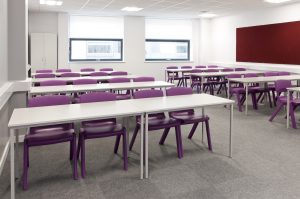When comparing the secondary public education system and the flexi learning alternative it illuminates some major differences. One of these differences is the time rigidity of schools, where there is a defined time that school starts and ends as well as the length of each lesson compared to the flexibility that the alternative offers (Piero de Bellis, 1989). Another difference is the idea of school being place concentrated, showing the apparent separation people believe learning should have. In the alternative this separation is removed to enable students to learn constantly. The final major difference is that of fragmented learning compared to holistic learning. Fragmentation is the way schools teach, using distinct subjects, with topics within them so all parts are separate. While flexi learning is a combination of both holistic and fragmented as it is difficult to avoid using these barriers between different information.

Can the alternatives replace the public-school system?
In some aspects the secondary education alternative could replace the current public-school system. One reason for this is due to how outdated the public-school system is. The idea of social imaginaries was brought about to explain the ways people imagine their social existence, which fits together with others creating expectations and common practices that should be met. (Taylor, 2002). These imaginaries are what enables everyone to live together. The current public-school system appears to reflect the 19thcentury educational imaginary which had the main aim of preparing students for their fixed station in life, showing how it is producer led. Schools and teachers appear to be autonomous units following the national curriculum produced to implement government ideals. The only difference between now and the 19thcentury education is the increased accessibility to education which offers more than basic subjects.
We should now be in a 21stcentury education imaginary, which reflects knowledge. This is what the secondary alternative is based around. This imaginary promotes student’s individuality as each student is on their own path determined by their interests, not their background. Education is also not constrained to a singular place, as shown through the home education section of flexi learning, where students can learn anywhere they choose as it is user led. Since flexi learning also includes attending a formal school setting, it is allows students to engage with diversity, as schools are full of diverse people who come from different classes, ethnicities and family types. Therefore, the flexi schooling alternative is much more suitable for a post-industrial society due to the existence of the different life experiences people have (Problemistics, 2017).
However, there are some things that the public school system can provide, which the alternative simply cannot. Due to globalisation which is defined as “the process by which businesses or other organizations develop international influence” (Lexico.com, 2020) society has different needs that it didn’t have before. Globalisation has affected society in many ways, one of these is the McDonaldization of society (Ritzer, 2018). This is the process where the principles of this fast food chain are starting to dominate the rest of society. These principles include efficiency, calculability, predictability and control. In terms of schools these processes are seen more in the public education system through the national curriculum and GCSEs. In addition to this he characteristics of school in industrial society support these processes through the “massification of learning processes” and “standardisation of learning contents” (Problemistics, 2017). This trend has said to be dehumanising as it does not think of the individual, however the public-school system achievement of allowing many people to obtain an education should not go unnoticed. It would also have been much too difficult to give so many people an education without it being standardised, where all students learn the same content in a similar way.
References
Lexico.com, 2020. Globalisation.[Online] Available at: https://www.lexico.com/en/definition/globalization [Accessed 20 May 2020].
Piero de Bellis, G., 1989. Education, Schooling, Learning. [Online] Available at: http://www.polyarchy.org/education.html [Accessed 20 May 2020].
Problemistics, 2017. Learning types and learning styles. [Online] Available at: http://www.problemistics.org/learning/types.styles.html#schoolsystem [Accessed 20 May 2020].
Ritzer, G., 2018. The McDonaldization of Societ. Maryland: SAGE.
Taylor, C., 2002. Modern social imaginaries. Public culture, 14(1), pp. 91 – 124.